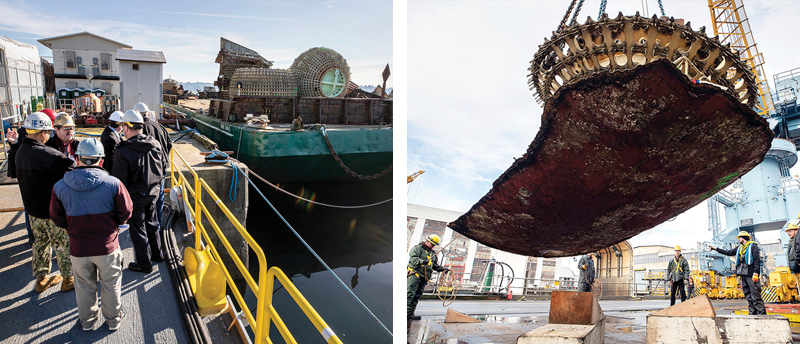In an effort to make the scrapping of old ships more economical and less harmful to the environment, the United States Navy has partnered with DLA Disposition Services in Bremerton to provide removal services that are expected to save millions of Department of Defense dollars in the future.
“For the last 30 years, Bremerton’s Puget Sound Naval Shipyard & Intermediate Maintenance Facility (PSNS & IMF) has deconstructed eight nuclear surface ships and more than 120 nuclear submarines, resulting in an average production of 16 million pounds of scrap every year,” said Thomas McPike, an assistant project superintendent at the shipyard.

With help from DLA, the new partnership will greatly reduce costs by working with commercial scrap vendors from around the globe. The man hours, equipment, and training necessary for the Navy to meet stringent demilitarization regulations will be minimized with DLA’s joint effort. By outsourcing the work to DLA, the naval shipyard can focus on upgrading and maintaining the active Navy fleet, rather than the labor-intensive process of scrapping decommissioned vessels.
“The average submarine recycling effort can take up to a year to complete, typically involving the cutting of vessels into salvageable pieces, costing at least $3.3 million per barge to complete,” McPike said. In addition, the shipyard is no longer allowed to use propylene or acetylene to do the deconstruction work without capturing the harmful smoke created from the torches.
The DLA contract initially calls for barge transport of about 9 million pounds of nuclear submarine pieces and shipyard facilities scrap to a firm in Tacoma. If the contractor, shipyard, and DLA agree that the performance level has met expectations, there are options for adding years of continuing support.
“We’re cautiously optimistic that this is going to go flawlessly,” said DLA Disposition Services director Mike Cannon, who traveled to the shipyard in February to observe the scrap generation process.


